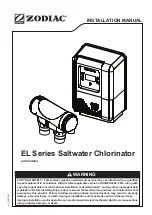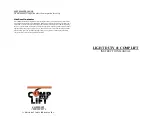
Operation
10
3A3383D
Operation
Pressure Relief Procedure
Follow the Pressure Relief Procedure when-
ever you see this symbol.
1.
Close the bleed-type master air valve (M).
2.
Open the dispensing valve, if used.
3.
Open all fluid drain valves (N) in the system, having
a waste container ready to catch drainage. Leave
drain valve(s) open until you are ready to pump
again.
Prime the Pump
1.
Fill the wet cup with Throat Seal Liquid (TSL).
NOTE:
Sealed 4 ball lowers with bellows do not require
TSL.
NOTE:
During operation the TSL level in the wet cup will
fluctuate slightly at pump changeover.
2.
Close pump air regulator (L) by turning knob coun-
terclockwise reducing pressure to zero. Close
bleed-type air valve (M). Also verify that all drain
valves (N) are closed.
3.
Connect air line (J) to bleed type air valve (M).
4.
Check that all fittings throughout system are tight-
ened securely.
5.
Connect the fluid supply line (C) from the mix tank
shutoff valve (D) to the pump.
6.
Connect the fluid line (E) to the pump outlet.
7.
Open bleed-type air valve (M). Slowly turn pump air
regulator (L) clockwise, increasing pressure until
pump starts.
8.
Cycle pump slowly until all air is pushed out and
pump and hoses are fully primed.
9.
Close the fluid shutoff valve (D) downstream of the
pump. The pump should stall against pressure.
NOTE:
In a circulation system, the pump operates con-
tinuously until the power supply is shut off. In a
direct-supply system, the pump starts when the dis-
pense valve is opened, and stops when the dispense
valve is closed.
Stop Pump at Bottom of Stroke
Relieve the pressure when you stop the pump for any
reason. Stop the pump on the down stroke, before the
air motor changes over.
Shutdown
Follow the
, page 10.
Always flush the pump before the fluid dries on the dis-
placement rod. See
on page 11.
This equipment stays pressurized until pressure is
manually relieved. To help prevent serious injury from
splashing fluid and moving parts, follow the Pressure
Relief Procedure when you stop spraying and before
cleaning, checking, or servicing the equipment.
NOTICE
Failure to stop the pump at the bottom of its stroke
allows fluid to dry on the piston rod, which can dam-
age the throat seal.








































